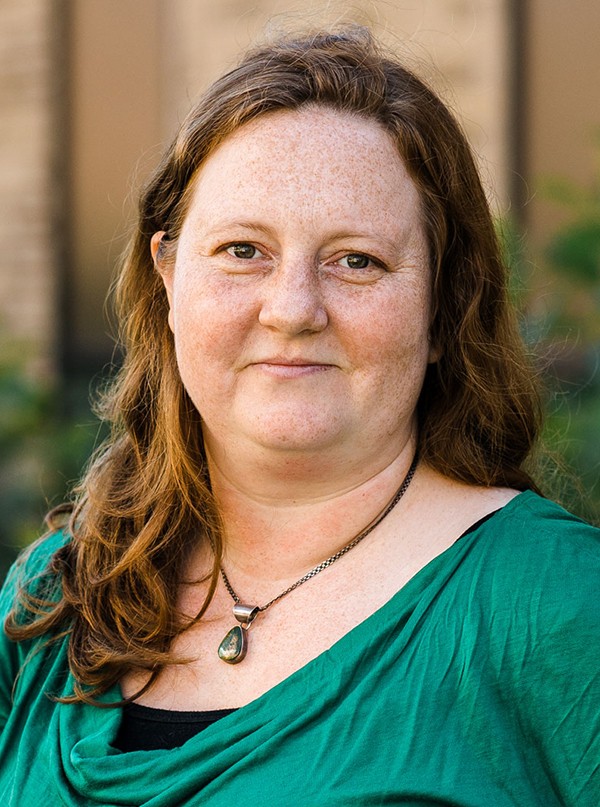Three life scientists awarded 2021 Schwartz funds
By Krishna Ramanujan
Three faculty members – investigating topics ranging from microbes secreted by beetles that preserve carcasses, to improving type-2 diabetes treatments in adolescent girls in low-income homes, to developing new biodegradable metallic surgical implants – are winners of 2021 Schwartz Research Funds for Women and other Underrepresented Faculty in the Life Sciences.
The awards, made possible through support from Joan Poyner Schwartz ’65 and Ronald H. Schwartz ’65, went to Tory Hendry, assistant professor of microbiology in the College of Agriculture and Life Sciences; Tashara Leak, assistant professor of nutritional sciences in the College of Human Ecology; and Atieh Moridi, assistant professor of mechanical and aerospace engineering in the College of Engineering.
In previous years, the funds provided up to $25,000 each to two researchers. This year, the funds were divided among three researchers, for smaller requested amounts. The awards help recipients acquire preliminary data and launch innovative research directions.
“The research fund is a testament to the Schwartzes’ consistent commitment to supporting Cornell faculty in breakthrough innovation,” said Yael Levitte, associate vice provost for faculty development and diversity. “This year the Schwartz also wanted to support researchers whose work was impacted by COVID-19.
The Schwartzes were both chemistry majors in the College of Arts and Sciences prior to long careers at the National Institutes of Health, where they became pioneers in promoting the work and careers of women in the life sciences.
Hendry will use her funds to collect genomic data on microbes secreted by burying beetles. The beetles inoculate carcasses with bacteria that preserve them from decomposition, so the beetles’ young can feed on them. The ability of these microbes to delay decomposition and curb the growth of bacteria associated with decay has piqued the interest of researchers, though little is known about the identities of the specific microbes involved or their functions. Hendry aims to use her expertise in the genomics and evolution of microbes to fill this gap.
“Thanks to the Schwartz research fund,” Hendry said, “once I have identified core symbiont taxa and candidate functional genes, I will be able to write grants for projects seeking to test their role in carcass preservation and antimicrobial production.”
Leak will use her award to test the efficacy and feasibility of a telehealth intervention to reduce type-2 diabetes risk among adolescent girls from low-income urban households.
Though the incidence of type-2 diabetes is rising at alarming rates among U.S. adolescents, with girls from low-income backgrounds disproportionately at risk, little is known about the disease in this population. The study will adapt a USDA funded multicomponent obesity intervention Leak previously developed into a telehealth intervention. The 12-week intervention will include nutrition and cooking lessons (with cooking ingredients sent to the homes) and livestreamed dance fitness classes.
Leak will measure the program’s efficiency and feasibility for participating adolescent girls (12-18 years) who are overweight or obese, have prediabetes, receive Medicaid and are patients at the Weill Cornell Medicine Pediatric Endocrinology Clinic.
Moridi’s project will incorporate recent developments in 3D printing to develop metal biodegradable surgical implants, which if successful, can overcome limitations of current biodegradable implants that degrade too fast or too slowly inside the body.
“The Schwartz research fund will be critical in enabling me to pursue this new direction of research,” Moridi said.
While metal implants are regularly used in surgeries, and surgeons often prefer permanent implants for some procedures (such as joint implants), there are many more applications where a biodegradable metal would be ideal. Plates and screws used to keep bones rigid and fixed during healing can lead to infection, weakening of the bone and post-healing discomfort. In children, implants can restrict future bone growth and must be removed. Nonmetal reabsorbable plates and screws lack the strength of metal counterparts and can induce an inflammatory response.
Moridi will begin taking steps to develop implants using biodegradable alloys based on iron, zinc or magnesium.
“These studies are crucial first steps for identifying promising compositions for biodegradable metallic implants,” Moridi said. “At the completion of these exploratory studies, we will have new intellectual property for composition of biodegradable implants.”
Media Contact
Get Cornell news delivered right to your inbox.
Subscribe



